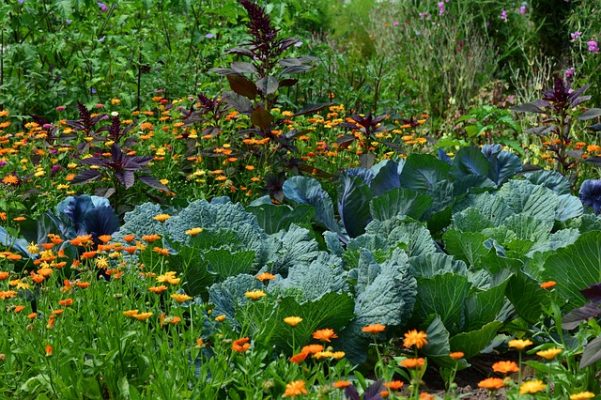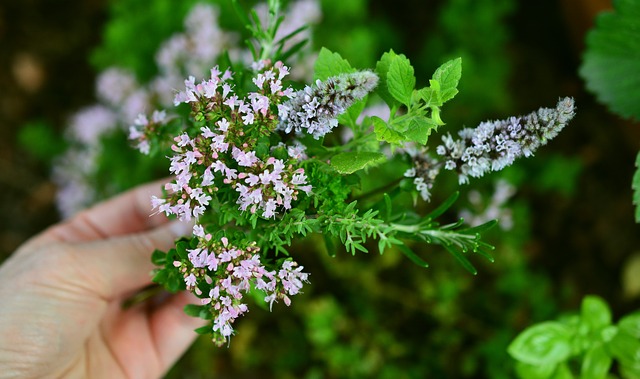What Flower Is In My Garden
It's exciting to watch new shoots pop up in springtime and new blooms emerge. But what is growing in your garden?
Maybe you just moved in and have no idea what the last owner planted in your garden. Or perhaps you're forgetful (like me) and just can't remember what you planted where in your garden.
This guide to garden flower identification will try to answer your plant questions and help you take excellent care of your garden all year.
Why Should I Care About Garden Flower Identification?
Garden flower identification will help you take the best possible care of your plants. If you don't know what's growing in your garden, it's hard to cater to each plant's specific needs. Each plant in your garden will have different needs regarding:
- Watering. Not all plants enjoy frequent showers, so knowing what's in your garden will ensure that you don't drown or dehydrate your flowers.
- Pruning. Without proper pruning, some plants quickly take over. Know which plants need regular trimming or risk an overgrown jungle in your front yard!
- Soil type. Some plants need extra-rich, moist soil while others actually do best in sandy and well-drained soil.
- Mulching or fertilizer. Plants that need nutrient-rich soil will require a schedule of mulch or fertilizer, while other plants almost never need such pampering.
- Shade and sun. Since not all plants do well in full or direct sunlight, you may need to provide extra shade or sun for certain plants.
- Wind protection. Some plants do well in windy areas, while others wither quickly. Know which plants to protect to keep your garden happy.
- Spacing from other plants. Many plants need extra space as they mature, but some like to be crowded. Identify the plants in your garden so that you can give them proper spacing.
- Common issues. It's hard to troubleshoot what's wrong with your plant if you don't know what type of plant you have.
Additionally, knowing what plants are in your garden will let you know if you have any medicinal plants in your garden or any invasive species.

How Can I Identify Flowers in My Garden?
Depending on what's in your garden, you might have your work cut out for you. Many small herbs and non-flowering plants can be quite challenging to identify. Field guides are often useless for garden flower identification since they focus on local plants rather than what you find in a garden store.
One of your best bets to identify plants in your garden is to use PlantSnap . PlantSnap is an app for your phone that identifies flowers and plants using an algorithm that analyzes photos and searches our huge plant database to find at match. Simply snap a clear photo of the unidentified plants in your garden, and let PlantSnap do the rest!
Sometimes, even PlantSnap struggles to identify plants in your garden. Generally, this is because the plants are immature or damaged or your photo isn't up to snuff (e.g. with only part of the flower showing). The plant identification app does best with very clear, well-lit photos of healthy flowers and/or leaves.
Also, many domestic plants have been bred for unusual colors or shapes. This can lead to the algorithm getting a bit "confused," but bear with us, our gardening app is constantly learning and updating!

What if PlantSnap Can't Identify a Flower in My Garden?
Sometimes, PlantSnap will give you a short list of possibilities for what's in your garden. From there, you can narrow down possibilities by:
- Looking at vein patterns. One of your best bets for garden flower identification in your garden is to look at vein patterns in the leaves. Veins in plants look like little lines along the leaf. There are three main types of vein pattern:
- Examine leaf shape. You can also narrow down plant species by looking at whether a leaf is smooth on the edges or serrated like shark's teeth. Some leaves are long and slender, while others are rounded. Finally, look at whether or not the leaf has any deep lobes (like the maple leaf above). All of these observations will help you narrow down what type of plant you're looking at.
- Comparing leaf patterns. Do the leaves branch out from the stem of the plant in a certain pattern? Examine whether the leaves are directly opposite each other in a two-by-two arrangement, staggered, or whirled around the stem.
- Notice flower shape. For plants with flowers, be sure to notice the shape and size of flowers. Pay attention to if parts of the flower are droopy or upright and whether they have hundreds of petals or just a few. All of this will help you identify the plant in your garden.
- Take note of color. Some plants have distinctive colors on the stems, root tops, leaves, or veins. Keep in mind that many domestic plants have fancy coloration thanks to selective breeding, so there's a wide variety in many garden plants.
- Looking for fruits or vegetables. It's much easier to identify plants if they produce fruits or vegetables. Unfortunately, most fruits and veggies aren't available until fall. This method might not help in the spring or fall!
Once you have this information, you can cross-reference that with the suggestions given by PlantSnap's algorithm. If you're still stuck, it might be time to call a local gardener for more advice. You might have a rare plant in your garden!
If you still have plant questions, there's no shame in getting help identifying plants in your garden. Local gardeners and botanists are generally happy to help out. You can either take several good photos of your plant to show them or trim a small section of the plant.
How did you tackle your garden flower identification ? What tips and tricks helped you out?
What Flower Is In My Garden
Source: https://www.plantsnap.com/blog/garden-flower-identification/
Posted by: reyesfewillic.blogspot.com

0 Response to "What Flower Is In My Garden"
Post a Comment